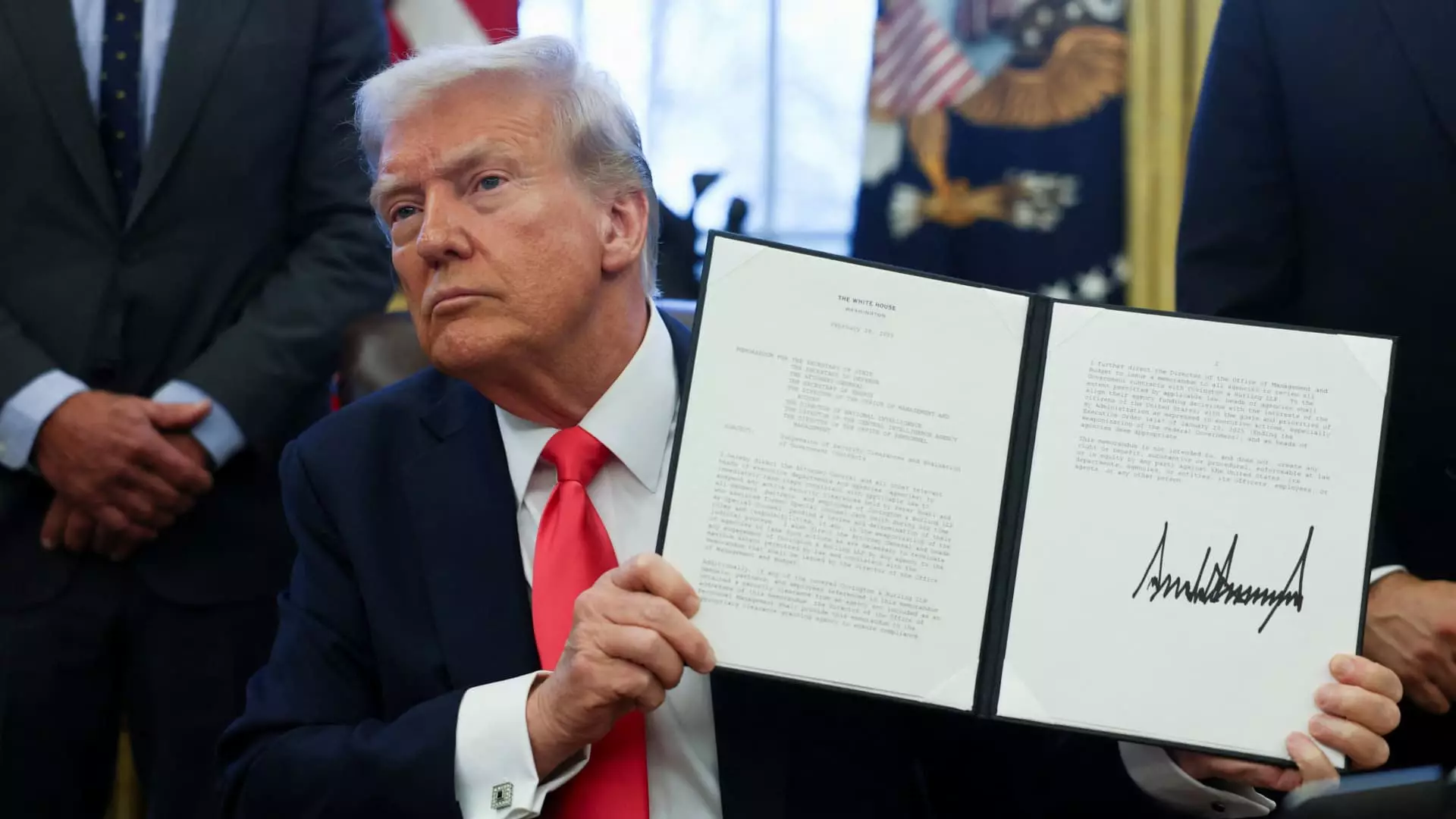In recent weeks, the economic landscape has been shaken by President Donald Trump’s announcements regarding tariffs on imports from neighboring countries and China. With a clarity that has often been absent in his administration, Trump specified that the long-anticipated tariffs on Mexico and Canada would come into effect on March 4. Additionally, an extra 10% tariff on Chinese goods will also be imposed. This article explores the motivations behind these tariff policies, their implications for international trade, and the mixed reactions from markets and analysts.
Trump’s justification for these tariffs rests heavily on the issue of illicit drug trafficking and border security. His assertion that drugs are “pouring” into the U.S. from both Canada and Mexico suggests a belief that economic measures like tariffs are necessary to enforce border control. While it is true that drug-related issues have plagued the nation, critics argue that tariffs are an oversimplified solution to a complex problem. By focusing on tariffs as a primary tool for controlling illegal immigration and drug trafficking, the administration may overlook multifaceted strategies that involve social, economic, and law enforcement approaches.
Moreover, Trump’s rhetoric frames the tariffs as a necessary corrective measure against countries that do not play by the rules. This point of view aligns with a broader nationalist perspective that prioritizes American interests in trade negotiations. It’s a perspective that resonates with a portion of the electorate but raises broader questions about the efficacy and morality of leveraging economic pressure for political goals.
Market Reactions and Economic Forecasts
The announcement regarding tariffs was met with volatility in financial markets. Futures for the Dow Jones Industrial Average dipped slightly in anticipation of Trump’s declaration but rebounded when trading commenced. This fluctuation illustrates a key tension in the current economic climate: while tariffs are intended to protect American jobs and industries, they also pose risks, including retaliatory measures from affected countries and increased costs for consumers.
In addition to the direct impact of tariffs, market analysts are concerned about the broader implications for global supply chains. Many industries rely on materials and products from both Mexico and Canada, and imposing tariffs could result in higher production costs that are inevitably passed on to consumers. The unpredictability of trade policy can create a chilling effect on investment, as businesses remain uncertain about future costs and operational viability.
Adding another layer of complexity to this situation is the apparent contradiction within the administration’s messaging regarding tariffs. Just an hour prior to Trump’s announcement, Kevin Hassett, Director of the National Economic Council, suggested a more measured approach, indicating that a comprehensive assessment of tariff policy would be conducted before final decisions were made. This disjointed communication could undermine investor confidence and fuel speculation about the administration’s long-term economic strategy.
Furthermore, Trump’s fixation on tariffs as a revenue source raises questions about long-term economic sustainability. While short-term gains may be seized, the long-term consequences of a trade war can result in a net loss for the economy, as seen in historical precedents.
Trump’s tariff policies also risk straining relationships with key allies. The prospect of increased barriers to trade with Mexico and Canada, crucial partners in North American trade, could create friction within the newly renegotiated USMCA framework. As global trade dynamics become increasingly polarized, countries might retaliate with their own tariffs, resulting in a tit-for-tat cycle that could have far-reaching consequences.
As the administration continues to assert its agenda, the implications of these tariff announcements will unfold in the coming months. For businesses, consumers, and policymakers alike, grasping the evolving international trade landscape will be essential to navigating the potential turbulence ahead.
While President Trump’s aggressive tariff strategy seeks to address issues of trade and security, the complications arising from this approach cannot be overlooked. The immediate benefits may be appealing, but the broader repercussions for economic stability and international relations merit careful consideration. As always, the interplay of domestic policies and global economics remains a crucial factor in determining the future trajectory of U.S. trade strategy.


Leave a Reply